Last winter Northern Harriers really struggled to survive here in northern Utah. For several months it was bitter cold with a thick layer of snow on the ground which made it close to impossible for our wintering raptors (including Barn Owls) to find and catch their typical prey – voles. So harriers were forced to look for other food sources, including small birds. Songbirds are relatively scarce here that time of year but this harrier got lucky.
1/2000, f/7.1, ISO 500, 500 f/4, 1.4 tc, not baited, set up or called in
Though it’s difficult to see, this harrier is feeding on a small bird pinned to the ground with its feet. It took the harrier almost 10 minutes to consume its meal but I deleted most of those shots because the busy background combined with flying feathers made for pretty messy images.
1/2500, f/6.3, ISO 500, 500 f/4, 1.4 tc, not baited, set up or called in
This goofy pose makes me chuckle. The harrier was cleaning the top of its head by rubbing it against his shoulder. In my experience this type of grooming usually takes place after the meal is finished but this bird hasn’t yet had dessert. I was pleasantly surprised to catch the eye open and not covered with the nictitating membrane during this process.
1/2500, f/6.3, ISO 500, 500 f/4, 1.4 tc, not baited, set up or called in
Here the bird is swallowing one last morsel after the feathers have been removed.
1/2500, f/6.3, ISO 500, 500 f/4, 1.4 tc, not baited, set up or called in
While the bird was feeding I struggled with the decision of whether or not to remove my tc. I wanted good detail in the feeding images but I also didn’t want to clip wings in take-off shots and I knew the bird was likely to take off toward me because of the phragmites directly behind the bird. In the end I left the tc on and clipped or cut off wings during most of the take-off.
1/2500, f/6.3, ISO 500, 500 f/4, 1.4 tc, not baited, set up or called in
This is the only shot with nothing clipped or cut off.
1/2500, f/6.3, ISO 500, 500 f/4, 1.4 tc, not baited, set up or called in
Despite the cut off wing I include this image so you can see the clumps of feathers still stuck (possibly frozen) to the feet of the harrier.
During winter, harriers in the northern part of their range feed on voles almost exclusively. I’ve seen harriers feeding on prey several hundred times over the years and this may be only the third or fourth instance I remember where the prey was a small bird.
Ron


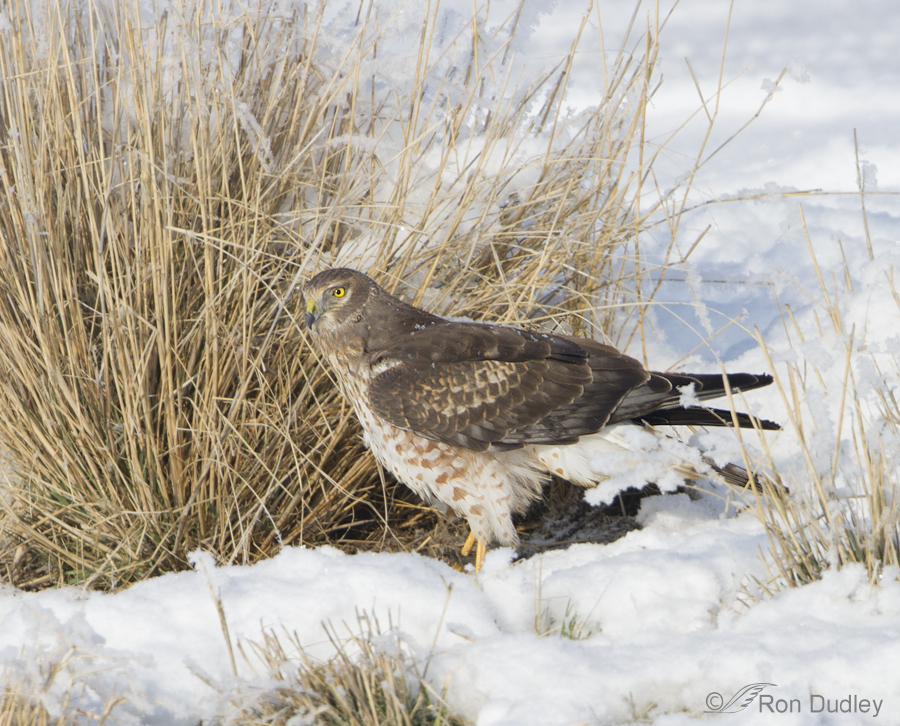
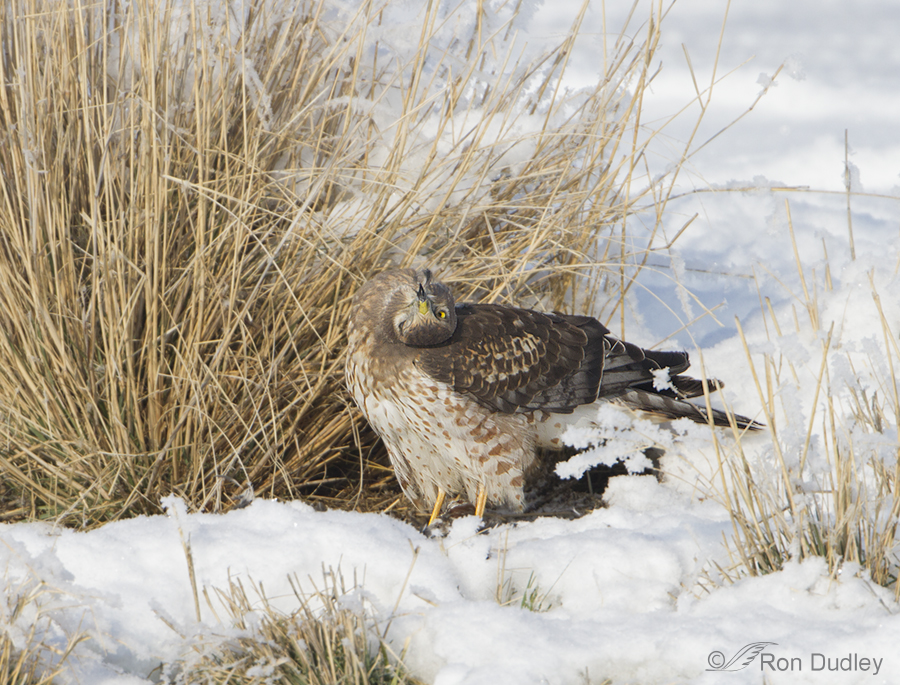
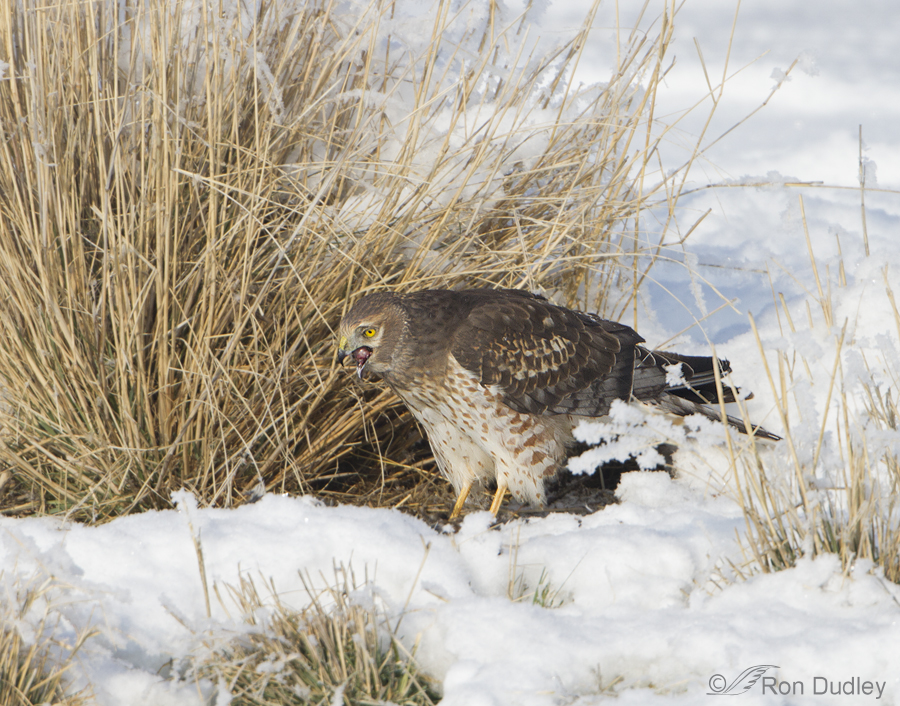
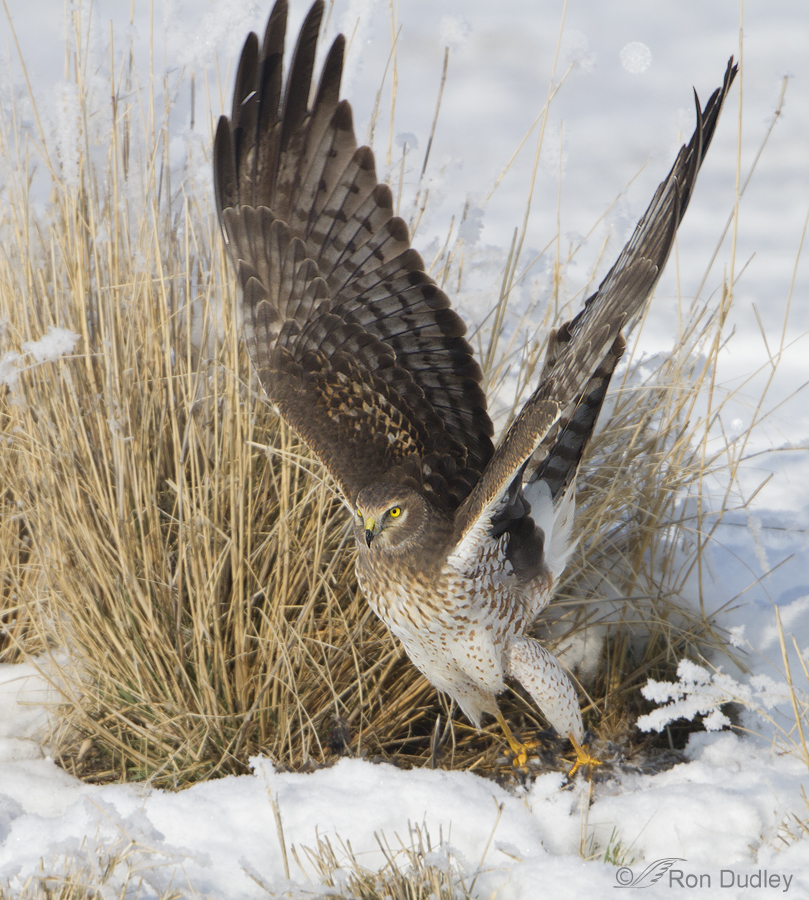
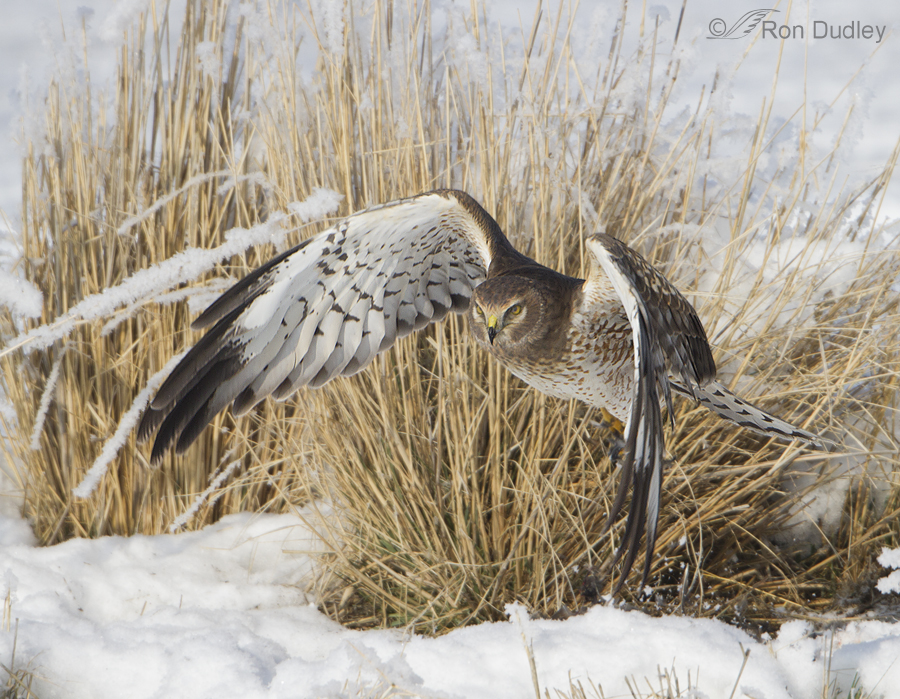
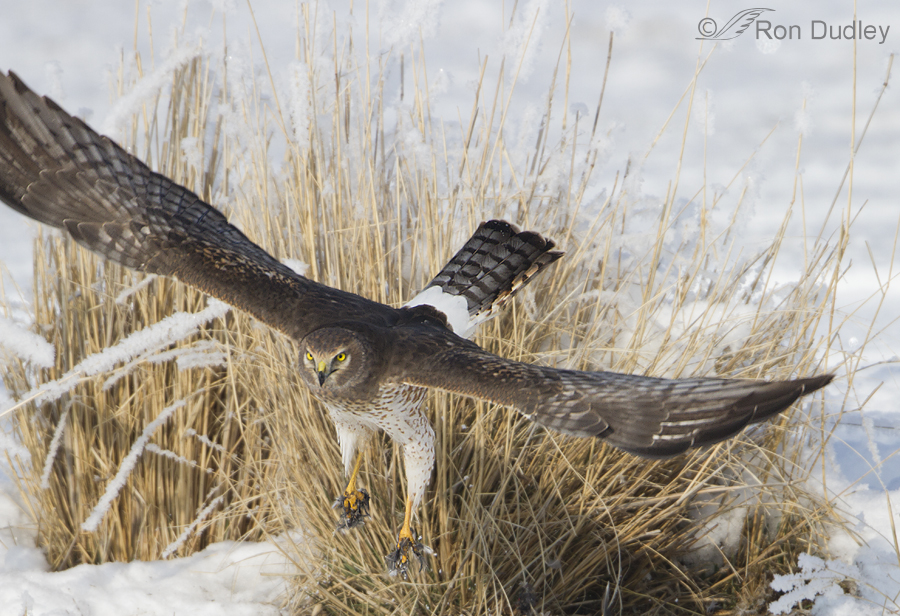
I had to come back to this today. Everyday I want to say, “My new favorite post.” Reality is, could never
pick just one. What I’ve learned from you is indispensable. Today’s twisted Kestral is fantastic.
Thanks Ron.
gotta love that upside down head trick!!! fabulous tones in this, Ron .. these could be fine paintings!!!! WOWZER!!!!
Sometimes clipped body parts convey a sense of immediacy and/or movement. Not always a fail by any means. And yes, you are hard on yourself. Harder than anyone else I suspect.
Love that grooming shot – the avian equivalent of wiping your nose on your sleeve?
Loved that analogy, Elephant’s Child. Loved it!
Even though the tip of one wing is cut off, the lift-off shot is just gorgeous. I like all of them, but that one just really draws me in.
Maybe I shouldn’t be so anal about clipped wings, Susan. Can’t tell you how many otherwise great shots I’ve deleted because of clipped body parts…
I understand about being a perfectionist – I’m the same way about many things. My feeling is when looking at a photo like this one that it is worth keeping a) because there is so very little clipped off, and b) because apart from that small glitch, the photo is so compelling. You wouldn’t be you if you didn’t aim for perfection, and perfection is one strong element of a really good photograph. I’m just glad that you posted this one despite its imperfection. Maybe some of the less than perfect ones are worth keeping? 🙂
Actually, Susan, I’ve already started to become a little more flexible on this. Since I started blogging I find myself keeping more of those types of images since they’re often useful in “telling a story”, as was the case here.
This is an amazing series…love burrowing owl imitation in second frame and images 4,5, 6, especially 4 and 5. You see and record such interesting behaviors! I can’t tell you how much I enjoy being able to see them and learn from them. Thank you so much!
Birds in general and raptors in particular will use their wings as a rubbing (preening or removal) surface because they can not use their beaks to reach their head plumage. They may use allopreening as well. They can also use their talons to aid in this process but are restricted to those methods. (Often the center toe is longer than the other forward toes to aid in facilitating this.)
All raptors are capable because of the number of cervical vertebrae as well as circulatory system placement in that area of their body to turn their heads “upside down” and to rotate them at least 180 degrees (owls still further). Us falconers often see the pose in photo 2 with our falcons, hawks, eagles and owls. Often this is simply the result of an attempt to get a different view of an object that bis normally above them. We see it more often in young birds that are learning how to use the various components of their vision.
Bill
Some very interesting information, Bill – as usual from you. For those who may not know the term, “allopreening” is mutual preening or the preening of another individual.
Thanks, Patty. I saw some more interesting behaviors this morning. Birds may finally be picking up again around here. It’s been a long cold spell…
Nature is so amazing. I actually love the first take off shot. Such an amazing capture. Feathers on the feet is such an interesting thing to see.
I practiced a little yesterday. Think I got one really good shot. The rest will be deleted. Was extremely windy and cold here on Pennsylvania. No snow here yet.
Ellen
Ellen, I actually like the wind (if it’s not blowing too hard) for shooting raptors because it slows them down as they fly into it and makes photographing them a little easier. It sometimes makes for interesting wing positions, too.
Thanks Ron. The winds will pick up here again soon and while I won’t see any raptors,I’ll try to capture some of my many birds fighting over the feeders in my yard. I learn more from you than anyone in my life. Thanks!!
“I learn more from you than anyone in my life. Thanks!!”
Melted my heart, Ellen…
It’s my good fortune to have found you and your photos somewhere on the internet. I enjoy seeing these birds especially the hawks when you find them
in unlikely situations. Clipped wings or not, the photos are delightful to see and bring joy and knowledge to my life.
Thanks you Ron Dudley
Thanks, Sandi. I tend to include clipped shots at times when there’s behavior or something else interesting involved but otherwise I generally don’t. Seeing them just makes me upset with myself…